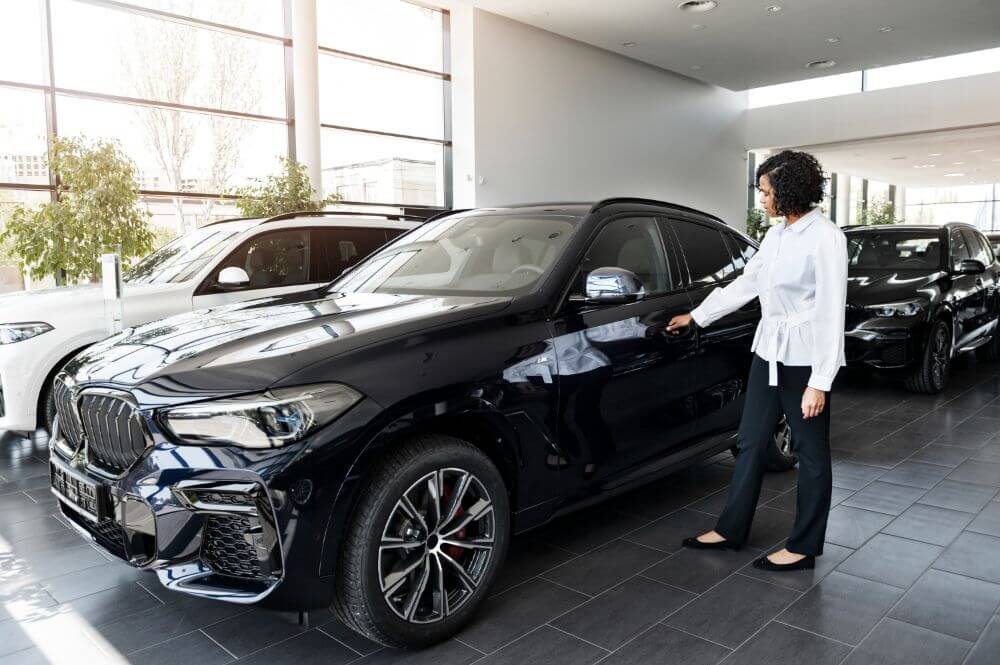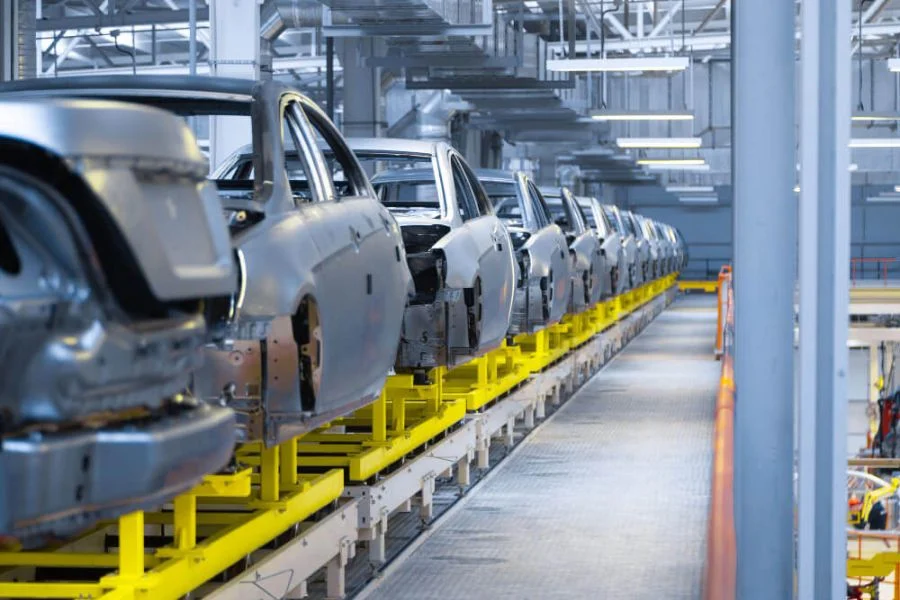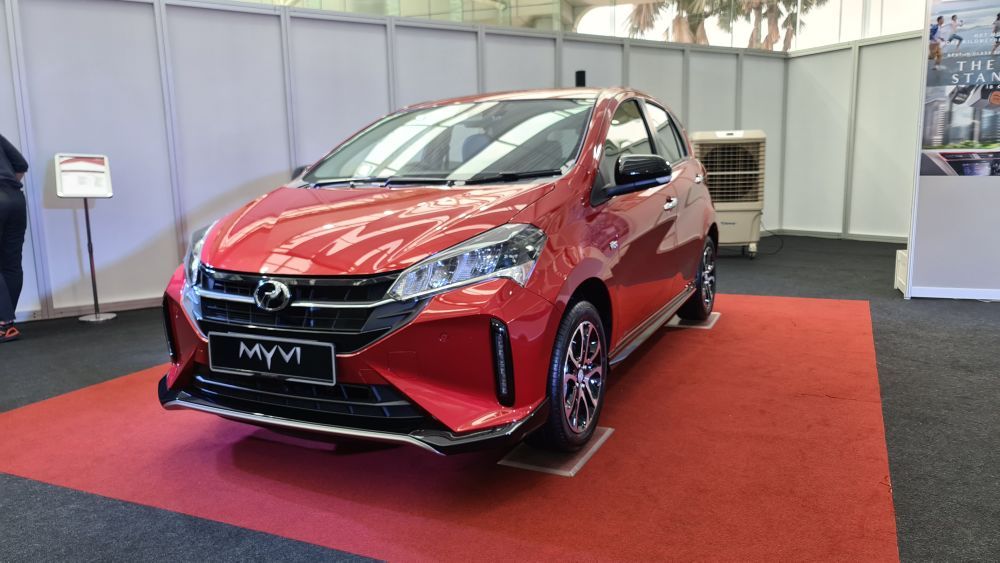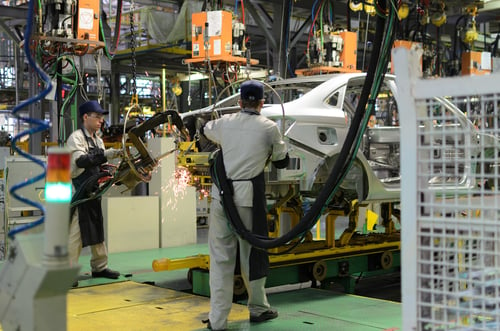Purchasing a new car is a big deal, especially since it involves a big chunk of change and can tie us down with quite a long loan tenure. On top of that, evaluating various factors to find the right car can be overwhelming due to the different brands, types, and specifications of cars available to us.
One of the main decisions you will have to make that not many think about is the vehicle assembly information, namely whether it’s a Completely Built Up (CBU) or Completely Knocked Down (CKD) car. So, what is the meaning of a CKD and CBU car, and should you always choose a CKD car in Malaysia? Read on to better understand CBU versus CKD before making your final decision.
What Does CBU Mean?
CBU cars are made in foreign countries and are imported into Malaysia as fully operating vehicles. Such imported cars usually come with heavy excise duties, which can range between 60 and 105 percent which essentially hike up the final price of the car. Here are some trade agreements that Malaysia has made with other countries that affect the price of CBU cars in Malaysia.
ASEAN AFTA and ATIGA
Nevertheless, thanks to a pact called the ASEAN Free Trade Area (AFTA) and the ASEAN Trade in Goods Agreement (ATIGA) between ASEAN countries, not all CBU cars are sold at a high price point.
With this pact, cars made in ASEAN countries do not come with import duties. For example, certain Honda and Toyota cars that are made in Thailand are not subject to the same import duties as the cars that are made in Germany.

Most Favoured Nation (MFN)
For cars that are imported into Malaysia from the WTO (World Trade Organization) Member Countries (like Austria, Germany, New Zealand, United States, and more), an MFN tax (Most-Favored Nation tax) – a non-discriminatory tax of 30 percent is charged on imports. This MFN tax is applied to all WTO Member Countries based on the listing contained in the Customs Duties Order(s).
Read More: A Guide to Car Loans & Interest Rates in Malaysia
Import Duty and Local Taxes on CBU Passenger Cars
| Import Duty | Local Taxes | |||
| Engine Capacity (CC) | Most Favoured Nation (MFN) | ASEAN ATIGA | Excise Duties | Sales Tax |
| Below 1,800 | 30% | 0% | 75% | 10% |
| 1,800 – 1,999 | 30% | 0% | 80% | 10% |
| 2,000 – 2,499 | 30% | 0% | 90% | 10% |
| Above 2,500 | 30% | 0% | 105% | 10% |
In summary, these are the main things to note about CBU cars:
- CBU cars are imported as a fully furnished assembled unit
- For non-ASEAN countries, there is a higher import duty of 30% for CBU models
- You can purchase a CBU car as soon as it is launched and released
What is a CKD Car?
In manufacturing, CKD means that a product is delivered in parts at the destination. Therefore, CKD cars refer to cars that are brought into Malaysia as parts and assembled at a local manufacturing company. Many models sold in Malaysia now are locally assembled to allow them to qualify for government incentives and excise duty exemptions. Basically, this means cheaper cars for Malaysians.
But why do Malaysian CKD car manufacturers get better tax incentives? It’s all about the economic benefits. To assemble a car kit sent from the brand’s original manufacturing country, local manufacturers need proper machinery, space, and workers to put the (CKD) car together. This, in turn, provides more job opportunities for locals and positively contributes to the country’s economy.
Read More: Common Mistakes to Avoid When You Test-Drive a Car

When did Malaysia introduce CKD cars?
Before Malaysia achieved independence in 1957, Malaysians could only purchase imported cars (CBUs) until 1960. The local government then began paying more attention to the country’s automotive industry and by 1967, local businesses started collaborating with foreign car brands to launch the Malaysian CKD car industry.
With the advancement in local technology throughout the years, including the collaboration between foreign brands and local assembly plants, Malaysia started producing its own car which we now know as our national brand, Proton.
Brands that paved the CKD industry in post-independent Malaysia were Swedish Motor Assemblies (now known as Volvo Car Manufacturing Malaysia) and Capital Motor Assembly (now known as Tan Chong Motors), which started making cars toward the end of 1967. Now, some of the most exciting cars are assembled in Malaysia including the Porsche Cayenne CKD and Mazda CX-30 CKD.
Here are the factories that assemble cars (CKD) in Malaysia.
| CKD Car Factory | Car Models |
| Toyota Assembly Services (Shah Alam) | Innova, Fortuner, Hiace, Hilux, Corolla Cross |
| Toyota Assembly Services (Bukit Raja) | Vios, Yaris |
| Go Automotive Manufacturing in Gurun, Kedah | Haval – H1, H2 |
| Hicom Automotive Manufacturers in Pekan, Pahang | Isuzu D-Max (Isuzu Hicom Malaysia, Pekan) |
| Volkswagen Tiguan Allspace, Passat, Arteon | |
| Mercedes-Benz A-Class Sedan, C-Class, E-Class, GLC, GLC Coupe, GLE, S-Class | |
| Mitsubishi XPander | |
| Volkswagen Golf, Golf GTI | |
| Honda Malaysia in Pegoh, Melaka | Honda City, City Hatchback, Civic, Accord, BR-V, CR-V, HR-V, WR-V |
| Inokom Corporation in Kulim, Kedah | BMW 2 Series Gran Coupe, 3 Series, 5 Series, 6 Series, 7 Series, X1, X3, X4, X5, X7 |
| Hyundai Santa Fe, Kia Carnival | |
| Mazda CX-5, CX-8, CX-30 | |
| MINI Countryman, Porsche Cayenne | |
| Perodua Global Manufacturing (Rawang) | Perodua Axia, Bezza, Ativa |
| Perodua Manufacturing (Rawang) | Perodua Aruz, Alza, Myvi, Toyota Veloz, Toyota Rush |
| Proton Shah Alam | Proton Saga, Exora (ceasing production at end of 2023) |
| Proton Tanjung Malim | Proton Iriz, Persona, X50, X70, X90 |
| Tan Chong Motor Assemblies (Segambut) | Subaru XV |
| Tan Chong Motor Assemblies (Serendah) | Nissan Almera, Serena, X-Trail, NV200, JMC Vigus Pro |
| Stellantis Gurun Plant (Previously Naza) | Peugeot 2008, 3008, 5008 |
| Volvo Car Manufacturing Malaysia | Volvo S60, S90, V60, XC40, XC40 EV, XC60, XC90 |
| Berjaya Assembly | Maxus G10, V80 |
Read More: Buying a Car? Here Are the Top 13 Questions to Ask at the Dealership
CBU vs CKD: Which is Better?
Malaysians have always been obsessed about where their cars are made as some believe that fully imported vehicles (CBU) are better in quality than locally assembled cars (CKD).
However, we now understand that the main differences are mostly in the price. While CBU cars in the past may be of better quality due to the more stringent regulations in foreign countries such as the EU and Japan, Malaysian-assembled cars have long incorporated better safety features and materials to cater to the evolving preferences of Malaysian buyers.
CKD and CBU cars are now largely on par with each other in terms of quality because they are assembled to meet strict global manufacturing standards and are subject to strict quality checks, whether locally or overseas. That said, the specifications and equipment may differ between CBU and CKD cars since CKD cars may be customized to better fit the local market.

Here’s a quick fun fact – Malaysian CKD cars are also being exported to other foreign countries. Here are some examples:
- Perodua Myvi to Singapore
- MINI Countryman S to Thailand
- Mercedes-Benz C 180 to the Philippines
- Mazda CX-5 to Indonesia, Thailand, and the Philippines
- Volvo Cars to Indonesia, the Philippines, Taiwan, Thailand, and Vietnam.
Here are some comparisons between buying a CBU or CKD car in Malaysia.
1. CKD Cars Are Usually Cheaper than CBU Ones
Since CKD cars qualify for government incentives and tax reliefs, many locally assembled cars are more affordable than the imported units. For example, the CBU Mercedes-AMG C300 sedan was priced at RM344,888 when it was launched in the beginning of 2022. In August the same year, Mercedes-Benz Malaysia launched the locally-assembled (CKD) version of the C300 which was priced at RM327,888. That’s RM17,000 cheaper than the CBU version.
2. Better Spare Part-Availability with CKD Cars
Another benefit of CKD models is the availability of spare parts – these parts are readily available as service centers are able to source it from local vendors who supply these manufacturing companies.
3. CKD Cars May Have Parts Better Suited for Malaysia
In some cases, the parts used in CKD cars may actually be better than CBU ones. Locally-assembled BMWs, for example, have different cooling systems and rubber components compared to imported or reconditioned models. Also, these local cars benefit from different ‘hot climate package’ components that cater to Malaysia’s driving conditions.
4. Be One of the First to Own the Latest Car Models with CBU
CBU cars are generally brought into our market first before CKD cars are launched. On some occasions, you can get the latest car models within a few months of their global launch, while you might need to wait over a year, often more than two years for the CKD version to be brought into Malaysia.
So, the next time you buy a car, the “made in” title should not be your deciding factor. Be it CKD or CBU, neither is better than the other. It mostly boils down to the model of the car that you want. Just remember, with a CKD car, you will end up saving more.
If you’re looking for an affordable, quality car, do check CARSOME out. CARSOME Certified cars are not only stringently selected based on a 175-point inspection but are professionally refurbished inside and out.
So what are you waiting for? Find your ideal car on CARSOME today or download our app.
This content was originally published on 17/3/2021. It has been updated for freshness, accuracy, and comprehensiveness.
